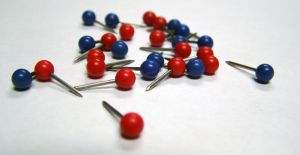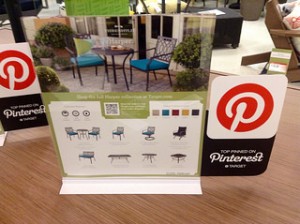 On Friday, Pinterest announced the release of two new features that leverage the massive amount of data it has at its disposal about its growing user audience. By analyzing both the content users pin and like on Pinterest as well as sites they visit outside of Pinterest that have the Pin It button, Pinterest will provide more personalized recommendations for additional content that users might like.
On Friday, Pinterest announced the release of two new features that leverage the massive amount of data it has at its disposal about its growing user audience. By analyzing both the content users pin and like on Pinterest as well as sites they visit outside of Pinterest that have the Pin It button, Pinterest will provide more personalized recommendations for additional content that users might like.
According to an article on the Pinterest blog, a new Edit Your Home Feed button is available which enables users to edit the content they see online or on their mobile devices to get their feed the way they want it. Ke Chen, Pinterest Software Engineer, explains, “Go to Follow Boards to see stuff you might like based on what you’ve been pinning. Or go to Unfollow Boards to stop seeing stuff you’re not that into anymore.” The more you pin, the better Pinterest’s board recommendations will get.
Pinterest also announced that it will provide more suggestions for pins and boards users might want to follow based on the websites they visit that have the Pin It button on them. For example, Pinterest might suggest boards about weddings to a Pinterest user who is planning a wedding and visits a lot of wedding sites that have the Pin It button.
Pinterest does offer a way to turn off the tracking features within users’ account settings, but they’re turned on by default.
What Does This Mean for Brands?
People have been speculating for some time that Pinterest is preparing to follow in other social sites’ footsteps by rolling out advertising in order to bring in some revenue. Cotton Delo of AdAge speculates that the roll out of personalization features using the data Pinterest collects is a major step to bringing Pinterest advertising to life. Cotton suggests three ways Pinterest might turn this data into advertising opportunities:
- Selling promoted pins to brands.
- Building audience segments to sell to marketers who want to advertise on Pinterest.
- Starting an ad network.
The opportunities are huge. Brands want to connect with consumers on Pinterest. It’s a highly visual medium used primarily by women who, research shows, make or influence the vast majority of purchase decisions. Pinterest also has a highly engaged audience, so it’s critical that advertising which is introduced doesn’t damage the user experience. As more and more Facebook users express frustration with the growth of promoted posts and ads that clutter the content they actually want to see, Pinterest should be taking notes and applying the lessons learned to its own future advertising efforts.
What do you think of the future of Pinterest advertising and the company’s use of behavioral tracking? Would your brand be an early adopter of Pinterest advertising if the opportunity presented itself? Leave a comment below and share your thoughts.
Image: Chris Cummings
Susan Gunelius is the author of 10 marketing, social media, branding, copywriting, and technology books, and she is President & CEO of KeySplash Creative, Inc., a marketing communications company. She also owns Women on Business, an award-wining blog for business women. She is a featured columnist for Entrepreneur.com and Forbes.com, and her marketing-related articles have appeared on websites such as MSNBC.com, BusinessWeek.com, TodayShow.com, and more.
She has over 20 years of experience in the marketing field having spent the first decade of her career directing marketing programs for some of the largest companies in the world, including divisions of AT&T and HSBC. Today, her clients include large and small companies around the world and household brands like Citigroup, Cox Communications, Intuit, and more. Susan is frequently interviewed about marketing and branding by television, radio, print, and online media organizations, and she speaks about these topics at events around the world. You can connect with her on Twitter, Facebook, LinkedIn, or Google+.

